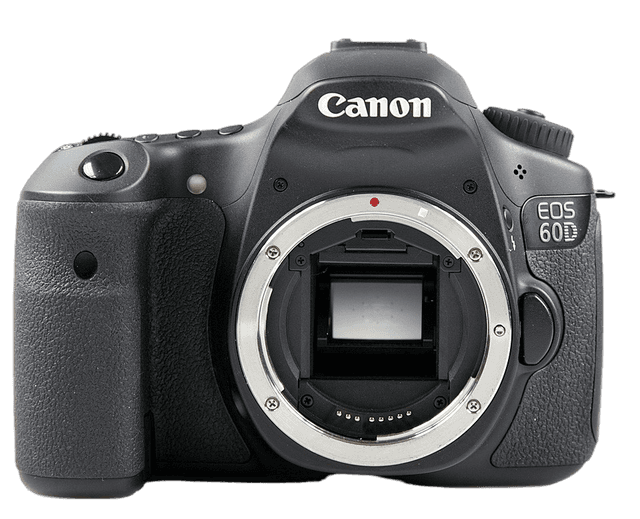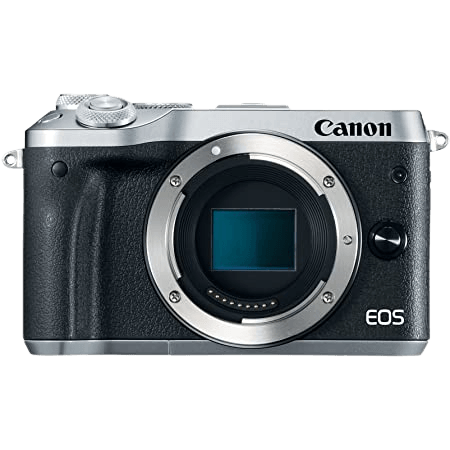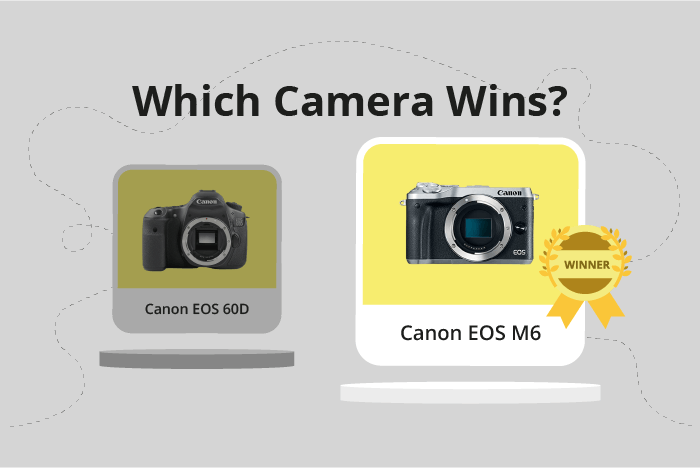Canon EOS 60D vs EOS M6 Comparison
Canon EOS 60D

Canon EOS M6

The Canon EOS M6 emerges as the winner with a score of 63/100, while the Canon EOS 60D trails behind with a score of 47/100. Both cameras share similarities such as being released in 2010 and 2017, having launch prices of $1199 and $780 respectively, and belonging to the Canon EOS family.
The EOS M6 outshines the 60D due to its lighter weight of 540g (1.19lbs) and compact size (112 x 68 x 45mm), making it more portable and convenient for users. On the other hand, the 60D is a DSLR with a weight of 755g (1.66lbs) and larger dimensions (145 x 106 x 79mm).
However, the EOS 60D has its advantages as a DSLR, offering a more robust build and better handling for some users. With these points in mind, the EOS M6 is the better option for those seeking a lightweight, compact camera, while the EOS 60D may be more suitable for users who prefer a sturdier camera with a more traditional DSLR feel.
Canon EOS 60D vs EOS M6 Overview and Optics
The Canon EOS M6 outperforms the Canon EOS 60D in optics, scoring 65/100 compared to the 60D’s 43/100. Both cameras share several specifications, such as an APS-C sensor size, CMOS sensor type, and a lack of image stabilization. Despite these similarities, there are key differences that set the EOS M6 apart.
The EOS M6 has a higher megapixel count at 24.2, while the 60D offers 18 megapixels. This means the M6 captures more detail and produces higher-resolution images. Additionally, the M6 has a superior shooting speed of 9 frames per second compared to the 60D’s 5.3. This allows for faster continuous shooting, making the M6 better suited for capturing action and fast-moving subjects.
Moreover, the EOS M6 features a more advanced Digic 7 processor, leading to better image processing, noise reduction, and overall performance. This is reflected in the DXOMARK score for the sensor, with the M6 achieving a score of 78 while the 60D scores 66. The M6 also uses a more compact Canon EF-M lens mount, offering greater compatibility with Canon’s mirrorless lenses.
However, the EOS 60D has the advantage of utilizing the Canon EF-S lens mount, which is compatible with a wider range of lenses, including both EF and EF-S lenses. This provides more options for photographers looking to expand their lens collection.
Considering these factors, the Canon EOS M6 proves to be the superior camera in terms of optics, offering better image quality, faster shooting speeds, and a more advanced processor. Meanwhile, the EOS 60D has the advantage of a broader lens compatibility, which may appeal to photographers with an existing collection of Canon lenses.
Canon EOS 60D vs EOS M6 Video Performance
When comparing the video capabilities of the Canon EOS 60D and the Canon EOS M6, the Canon EOS M6 emerges as the clear winner, with a video score of 70 out of 100, while the Canon EOS 60D lags behind at a score of 43. Both cameras share some similarities in their video specifications, such as having Full HD video resolution and maximum video dimensions of 1920 x 1080.
However, the Canon EOS M6 outperforms the Canon EOS 60D in terms of video frame rate, offering 60fps compared to the 60D’s 30fps. This higher frame rate enables the M6 to capture smoother and more detailed video footage, making it a superior choice for videographers. Additionally, the Canon EOS M6 possesses built-in time-lapse functionality, which the 60D lacks. This feature allows users to create stunning time-lapse sequences without the need for additional equipment or software.
Despite the Canon EOS 60D’s lower video score, it is important to note that it still offers Full HD video resolution, making it a viable option for casual video recording. However, its lower frame rate and lack of time-lapse functionality may limit its appeal to more serious videographers.
Taking these factors into consideration, the Canon EOS M6’s superior video capabilities make it the better choice for those looking to capture high-quality video footage. Its higher frame rate and built-in time-lapse functionality set it apart from the Canon EOS 60D, making it a more versatile and appealing option for a wide range of users, from casual videographers to professionals.
Canon EOS 60D vs EOS M6 Features and Benefits
The Canon EOS M6 triumphs over the Canon EOS 60D with a feature score of 70/100, while the latter scores 57/100. Both cameras share some common specifications, such as a 3-inch screen size and a screen resolution of 1,040,000 dots. Neither camera includes GPS.
The EOS M6 stands out due to its touchscreen capability, WIFI, and Bluetooth features. These additional features provide users with a more convenient and efficient experience, as they can easily navigate the camera’s settings, transfer files wirelessly, and connect with other devices seamlessly. Moreover, the EOS M6 has a flip screen, which is also present in the EOS 60D, offering flexibility in shooting angles and aiding in capturing creative shots.
On the other hand, the EOS 60D does not offer any superior features compared to the EOS M6. Both cameras share the flip screen feature, but the EOS 60D lacks the touchscreen, WIFI, and Bluetooth functionalities found in the EOS M6. This puts the EOS 60D at a disadvantage, as users may find it less convenient and efficient to operate.
Taking these points into account, the Canon EOS M6 is the clear winner in terms of features. The touchscreen, WIFI, and Bluetooth capabilities make the EOS M6 more user-friendly and efficient, while the EOS 60D does not offer any advantages over its counterpart. The EOS M6 is the better choice for those seeking a camera with more advanced and convenient features.
Canon EOS 60D vs EOS M6 Storage and Battery
The Canon EOS 60D outperforms the Canon EOS M6 in storage and battery with a score of 45/100, compared to the M6’s 16/100. Both cameras share some common specifications, such as having one memory card slot and accepting SD, SDHC, and SDXC memory cards. Neither camera offers USB charging.
The 60D’s superior battery life sets it apart, providing 1100 shots per charge with its LP-E6 battery. In contrast, the M6’s battery life is significantly lower, offering only 295 shots per charge using the LP-E17 battery. This difference makes the 60D a more reliable option for extended shooting sessions.
However, the M6 does not hold any advantage over the 60D in terms of storage and battery. The shared specifications and lack of USB charging make it an inferior choice in this aspect.
Taking these factors into account, the Canon EOS 60D is the clear winner in storage and battery capabilities, providing a longer-lasting and more dependable performance than the Canon EOS M6.
Canon EOS 60D vs EOS M6 – Our Verdict
Are you still undecided about which camera is right for you? Have a look at these popular comparisons that feature the Canon EOS 60D or the Canon EOS M6:

